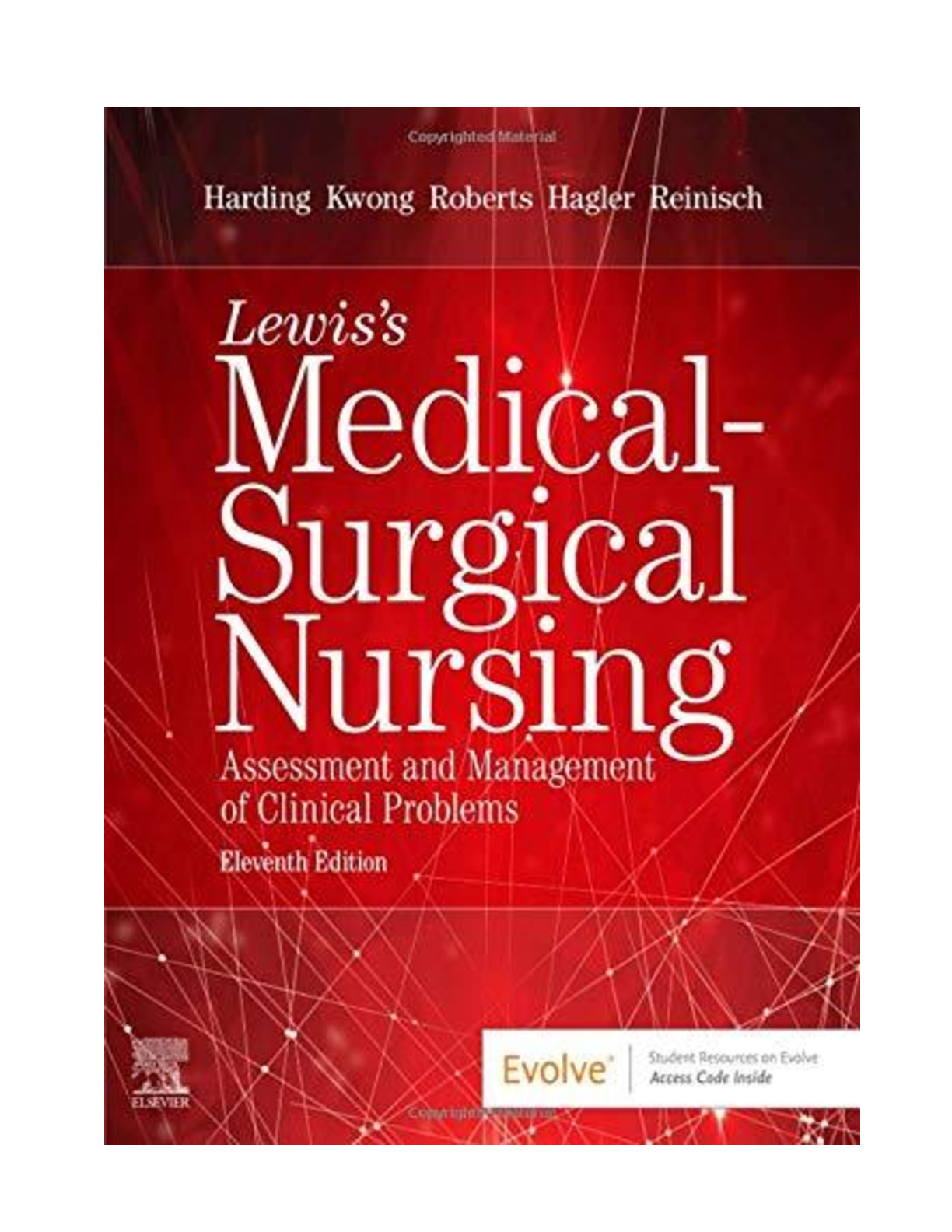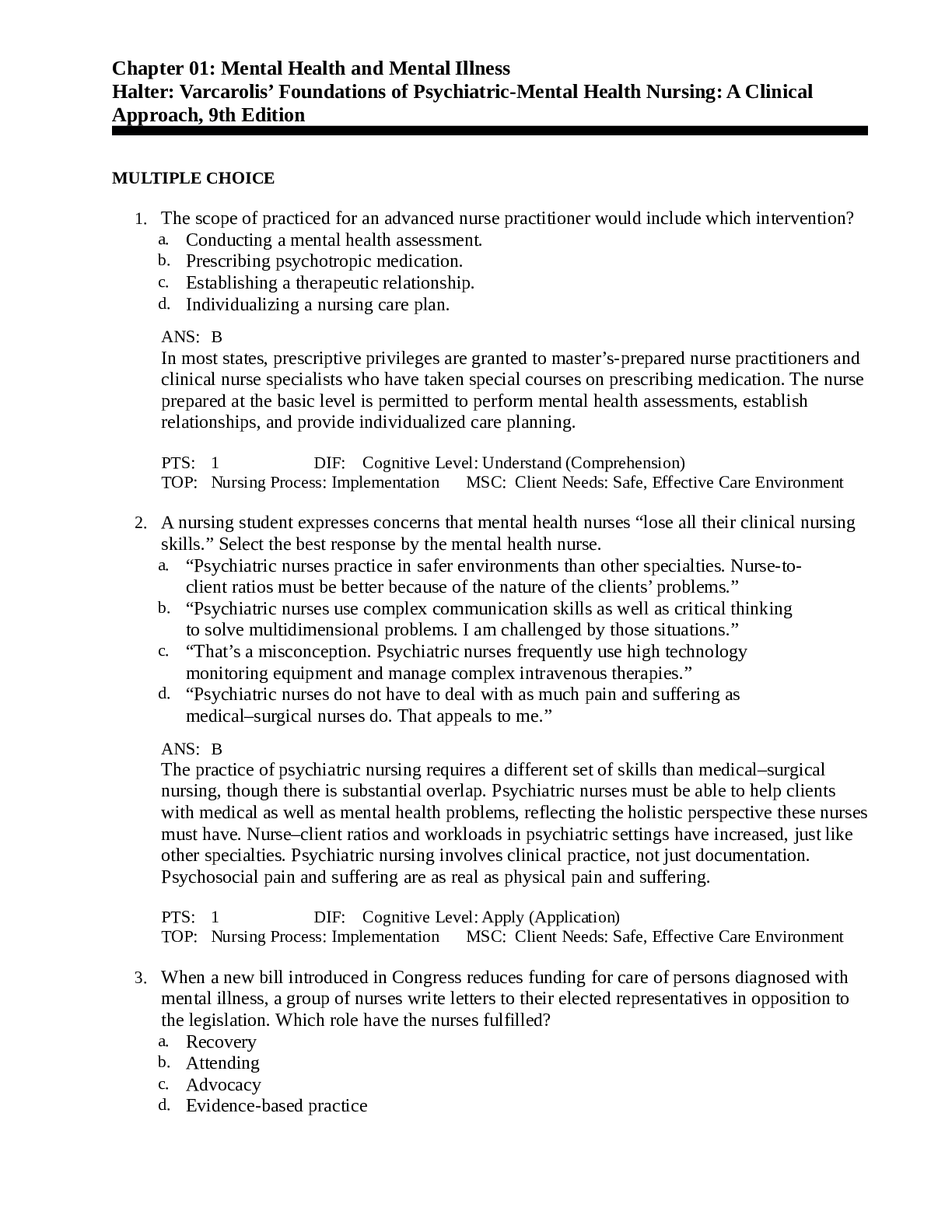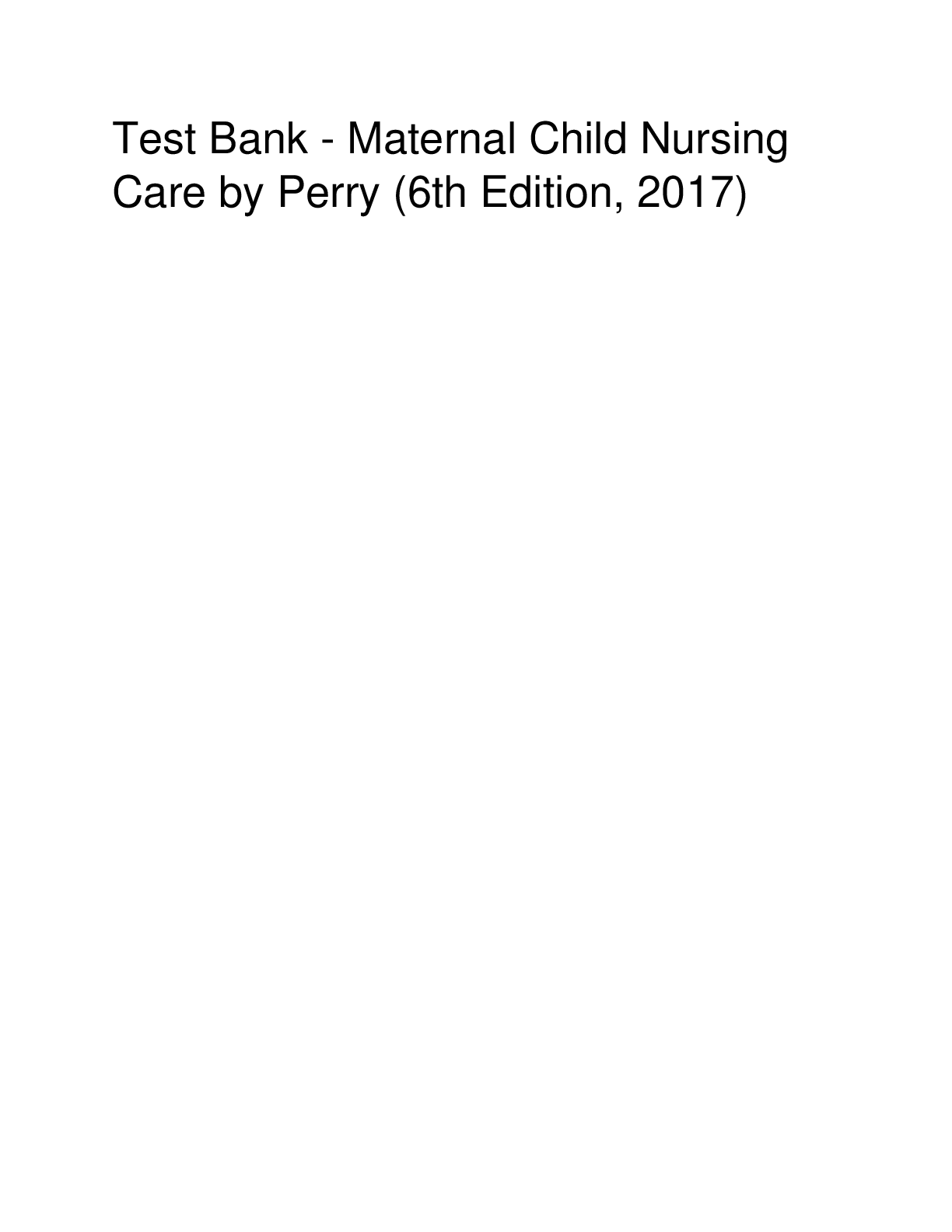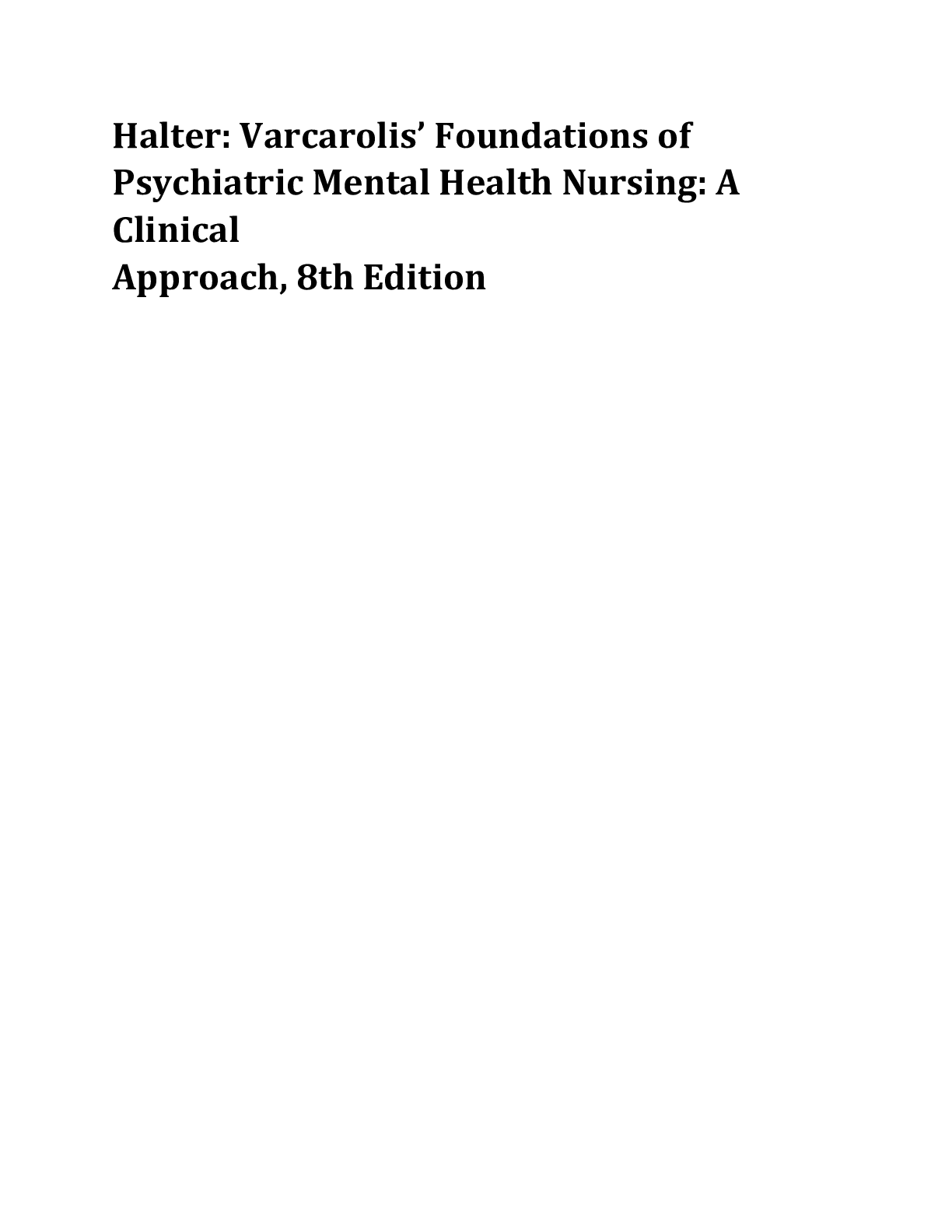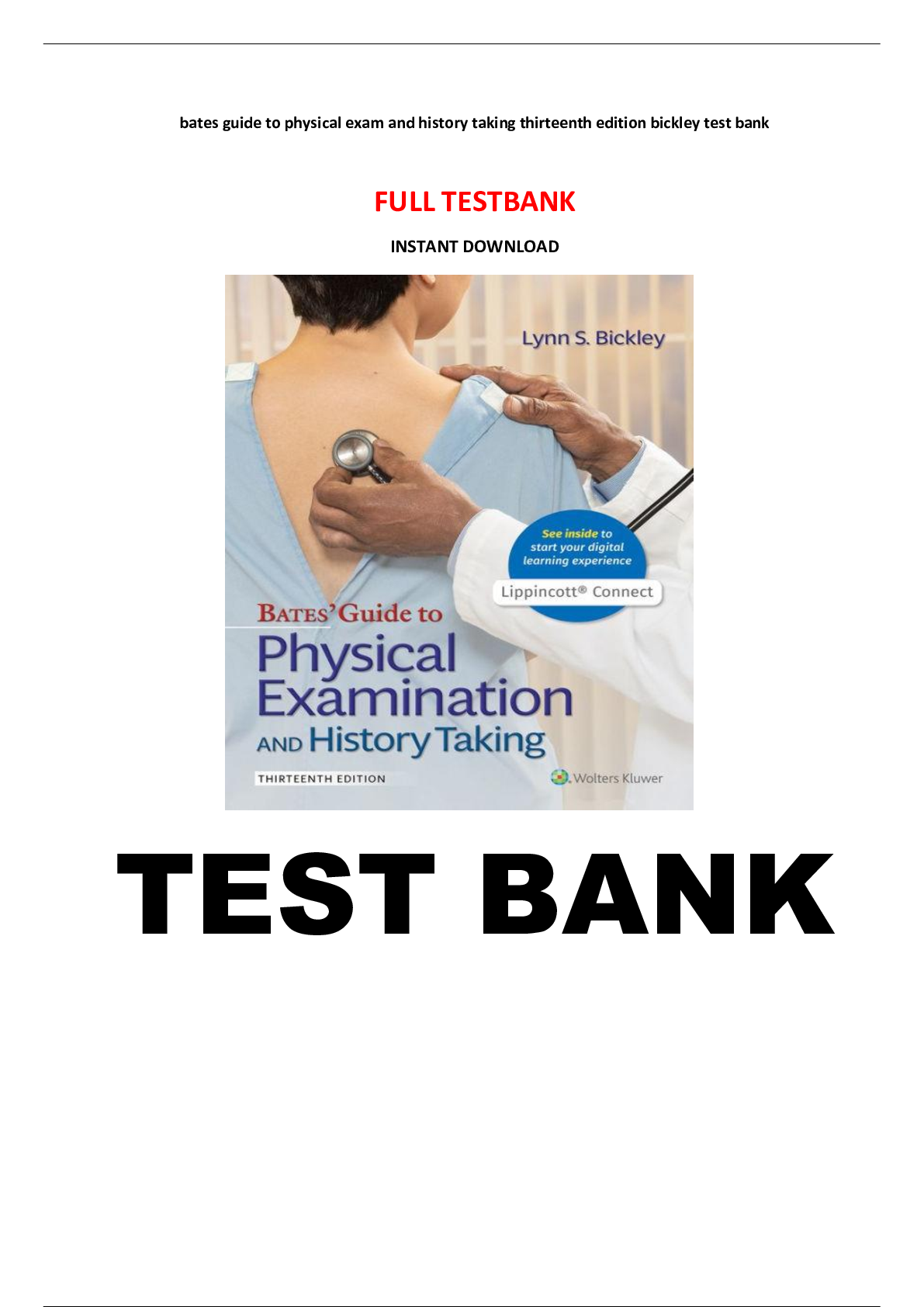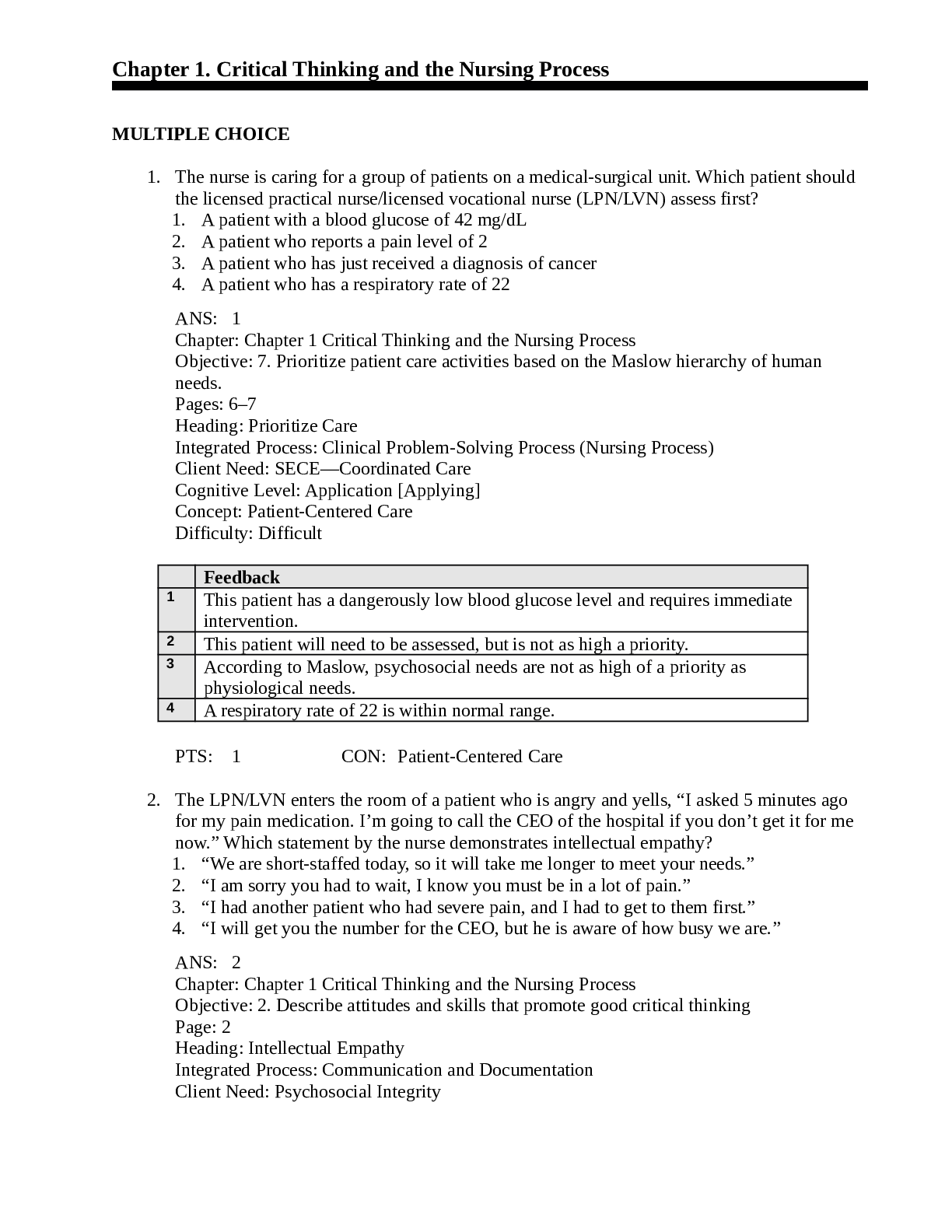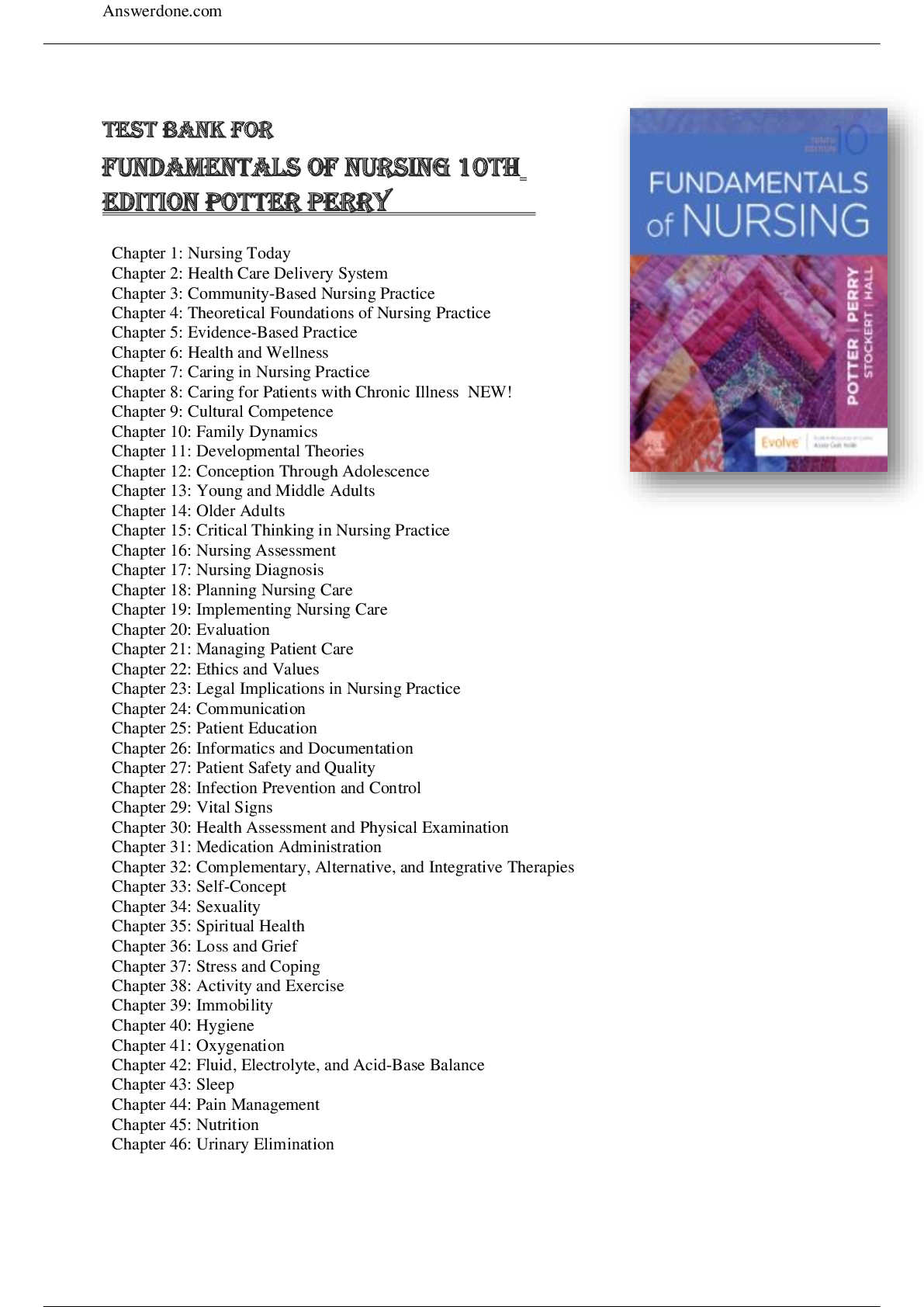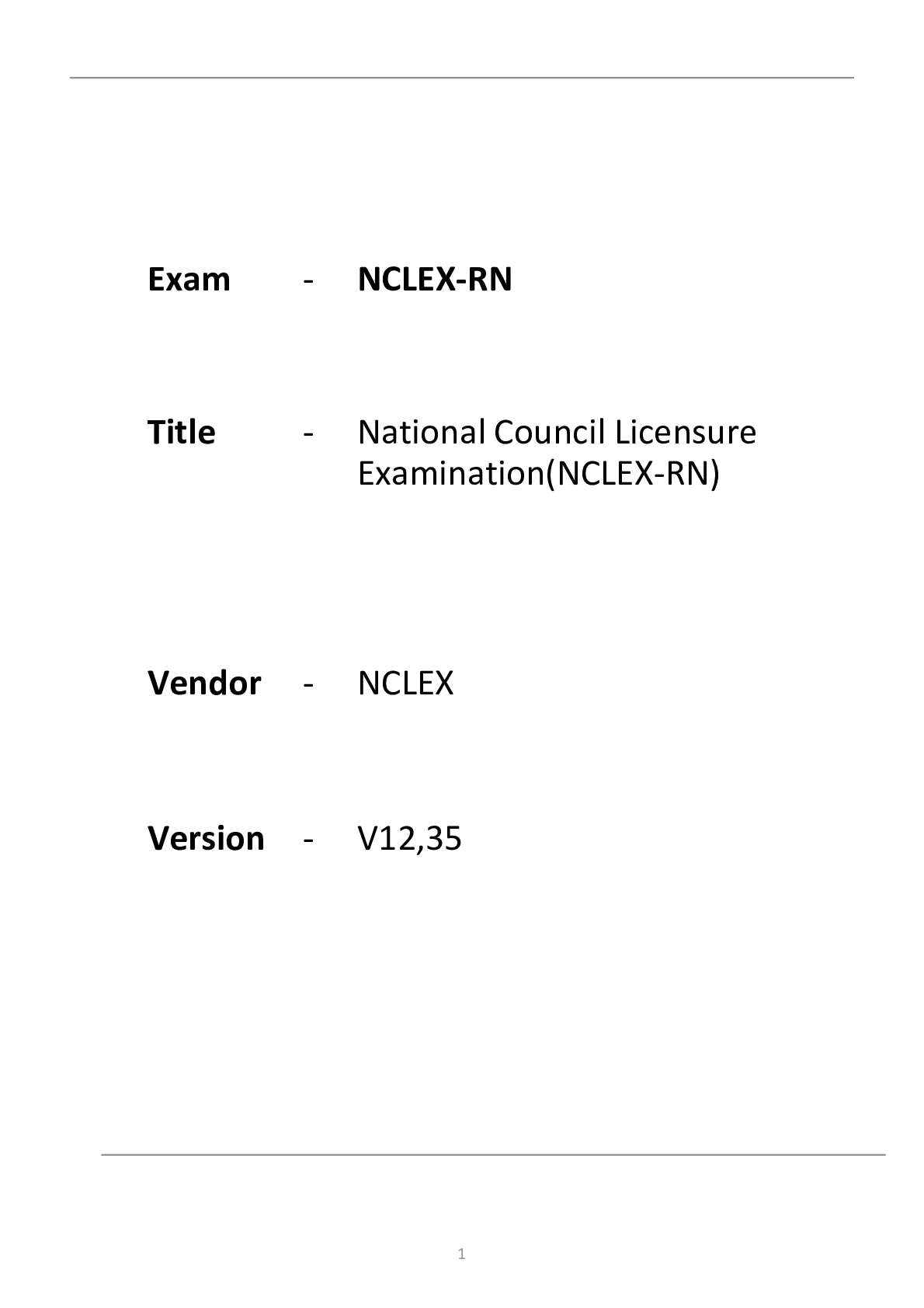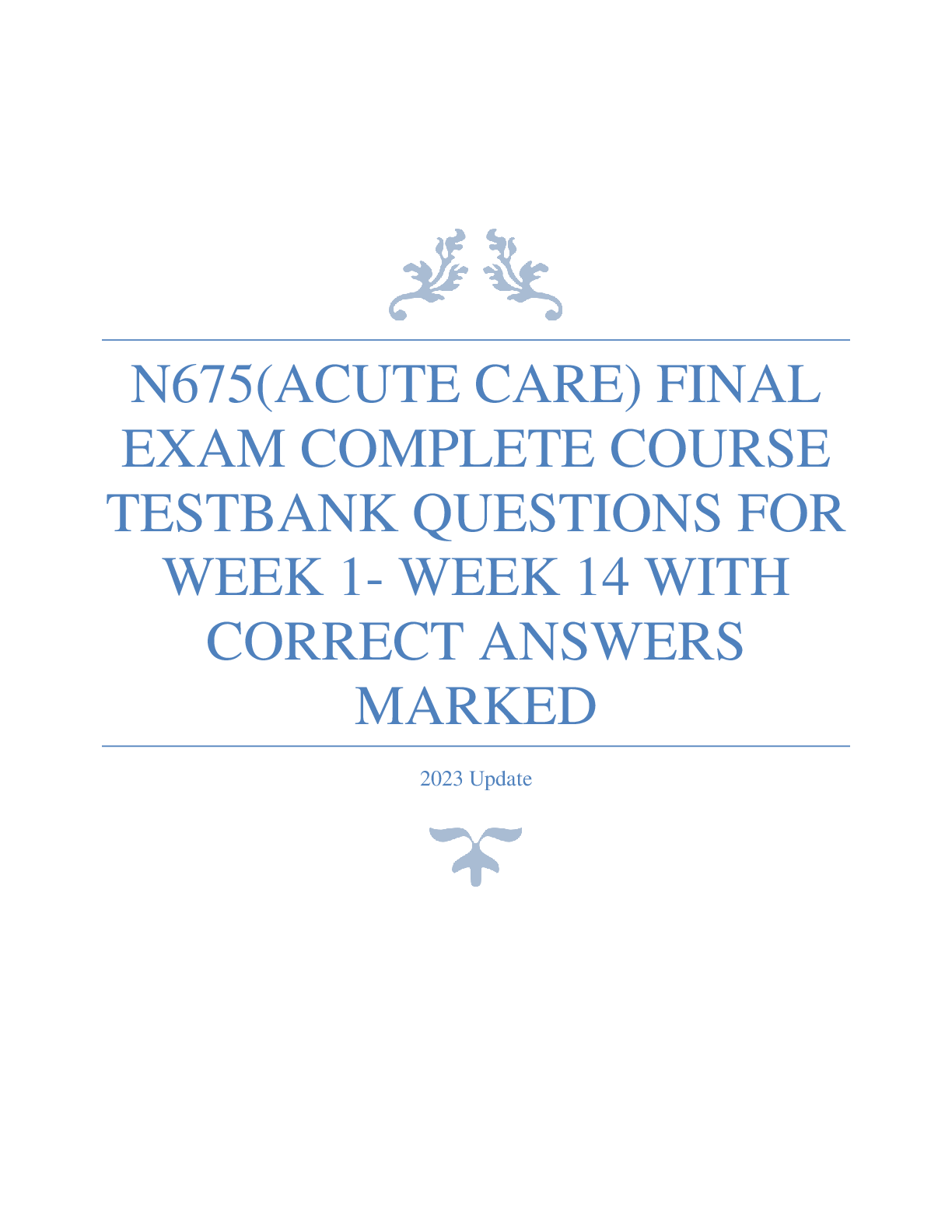*NURSING > TEST BANKS > 2019 TEST BANK QUESTIONS FOR NCLEX RN V12.35 865 questions (All)
2019 TEST BANK QUESTIONS FOR NCLEX RN V12.35 865 questions
Document Content and Description Below
NO.36 A mother brings a 6-month-old infant and a 4-year-old child to the nursing clinic for routine examination and screening. Which of these plans by the nurse would be most successful? A. Examine ... the 4 year old first. B. Provide time for play and becoming acquainted. C. Have the mother leave the room with one child, and examine the other child privately. D. Examine painful areas first to get them "over with." Answer: B Explanation: (A) The 6 month old should be examined first. If several children will be examined, begin with the most cooperative and less anxious child to provide modeling. (B) Providing time for play and getting acquainted minimizes stress and anxiety associated with assessment of body parts. (C) Children generally cooperate best when their mother remains with them. (D) Painful areas are best examined last and will permit maximum accuracy of assessment. NO.37 Diagnostic assessment findings for an infant with possible coarctation of the aorta would include: A. A third heart sound B. A diastolic murmur C. Pulse pressure difference between the upper extremities D. Diminished or absent femoral pulses Answer: D Explanation: (A) S1 and S2 in an infant with coarctation of the aorta are usually normal. S3 and S4 do not exist with this diagnosis. (B) Either no murmur will be heard or a systolic murmur from an associated cardiac defect will be heard along the left upper sternal border. A diastolic murmur is not associated with coarctation of the aorta. (C) Pulse pressure differences of>20 mm Hg exist between the upper extremities and the lower extremities. It is important to evaluate the upper and lower extremities with the appropriate- sized cuffs. (D) Femoral and pedal pulses will be diminished or absent in infants with coarctation of the aorta. NO.38 During a client's first postpartum day, the nurse assessed that the fundus was located laterally to the umbilicus. This may be due to: A. Endometritis B. Fibroid tumor on the uterus C. Displacement due to bowel distention D. Urine retention or a distended bladder Answer: D [Show More]
Last updated: 2 years ago
Preview 1 out of 317 pages

Buy this document to get the full access instantly
Instant Download Access after purchase
Buy NowInstant download
We Accept:

Reviews( 0 )
$7.00
Can't find what you want? Try our AI powered Search
Document information
Connected school, study & course
About the document
Uploaded On
Aug 16, 2021
Number of pages
317
Written in
Additional information
This document has been written for:
Uploaded
Aug 16, 2021
Downloads
0
Views
75

